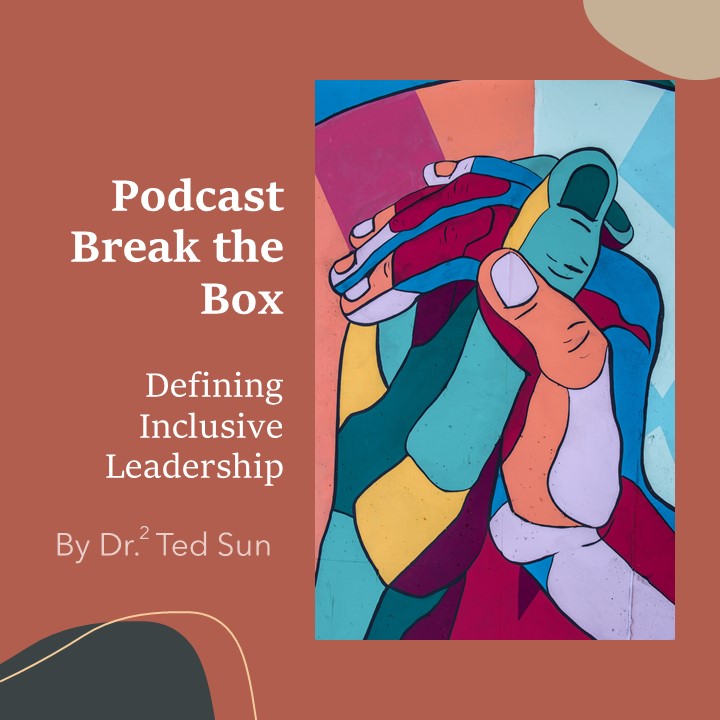3 Keys to Effective Organizational Communication
Minimizing frustrations across many levels
By Dr. Ted Sun

You made significant efforts to create an effective plan to launch a project. It took months to integrate all the moving parts. You’ve communicated it multiple times throughout the organization. When kickoff starts, nothing is going as planned. Very few people are doing what they are supposed to do. How frustrating is it to see numerous problems arise when it seems that very few people stuck to your plans?
Unfortunately, this is all too common in numerous organizations, from established corporations to firms looking to grow. The impacts of effective communication can be seen on many levels, including employee retention, project budgets and timelines, service delivery, customer satisfaction, burnout, workplace stress, productivity, etc. Communication is much more than a skill working with the hierarchies of an organization. Successful organizations design communications from a systems perspective, synthesizing technology, leadership skills, and memorable content. It functions within the hierarchy of the organizational structure, but also weaves through a web-like learning structure. It is so much more than a skill or a certificate program you complete in a few weeks.
Hierarchy of Communication
All organizations operate functionally with some type of hierarchy. While this is needed for work design and task completion, communication tends to be much more lucrative and often not linear. At the executive level, leaders often don’t get accurate information on problems fast enough; by the time they become aware of the problem, it’s distorted through many layers of the organization. This creates ample frustration and a constant need to solve major problems.
At the lower levels, many lack the full information needed to perform their jobs. For example, one organization made strategic changes in product pricing and delivery to be more competitive in the marketplace. While it made perfect sense at the top level, how it gets implemented failed to get to the lower levels. The team on the ground felt stupid for not knowing these changes in the system, and now they have to go back to the customers and change all the work they had completed. While it makes perfect sense for information pertinent to the job to be transparent at the lower levels, how it’s communicated makes a world of difference. Too often, an email isn’t enough. The communication problem often bleeds into new employees as onboarding information rarely reflects the constant adaptations of strategy at various levels of the organization, leading to more problems down the line as new employees step into their roles. To overcome these communication problems across the entire organization, successful organizations use a systems approach to communication.
3 keys to Effective Communication Systems
Communication is the lifeblood of organizations – this is one of the few statements I recall from one of my professors, Jeff Ford. After decades of research, publishing, teaching, and consulting, this statement has always been at the heart of almost every engagement. While designing communication systems involves numerous elements, we’ll speak to three of the most important keys.
 Memorable Content: Any communication requires content that is meaningful and memorable. Every human being is exposed to 11 billion bits of data each second. Most of that data is ignored. Approximately 40-50 bits of data get consciously processed by our brain. But processing data does not become long term memory. This is a common flaw in many training programs where people assume that exposure to new information equates to knowledge gained. In reality, most of what we process is forgotten. For information to be memorable, emotional hooks in the brain must be consciously integrated into the contents. The stronger the emotion, the more likely it will become knowledge with sustained recall. This is where emotional intelligence and knowledge of your employees are key. What do your employees care about? How might you channel the content of your communication to something that’s meaningful for them? Organizational systems, such as employee inventory, have to support the content design from an emotional perspective.
Memorable Content: Any communication requires content that is meaningful and memorable. Every human being is exposed to 11 billion bits of data each second. Most of that data is ignored. Approximately 40-50 bits of data get consciously processed by our brain. But processing data does not become long term memory. This is a common flaw in many training programs where people assume that exposure to new information equates to knowledge gained. In reality, most of what we process is forgotten. For information to be memorable, emotional hooks in the brain must be consciously integrated into the contents. The stronger the emotion, the more likely it will become knowledge with sustained recall. This is where emotional intelligence and knowledge of your employees are key. What do your employees care about? How might you channel the content of your communication to something that’s meaningful for them? Organizational systems, such as employee inventory, have to support the content design from an emotional perspective.- Synthesizing Technology: Technology seems to be abundant in today’s workplace. Too often, it gets very confusing. Technology such as emails, Slack, salesforce, etc. creates a myriad of options for information storage and transfer. At the core of technology, a knowledge management system is the centralized location organized for employee access. Employees need to know where they should look to find the relevant information quickly. We’ve seen organizations scatter different technology across various departments. One may use email more often, while another department uses Slack. And they point to different sources like Salesforce or Microsoft dynamics (such as Teams and others). How people leverage a centralized technology system leads toward considerations at the source of information.
- Leadership skills: While conventional wisdom tends to speak to communication skills in general, we’re exploring this with a wider lens. Communication skills are composed of numerous skills such as active listening and Socratic methods. They also require alignment of specific values that form healthy perceptions of people, which extends into the leadership realm. Consider managers who see their team as people who are there to perform a task dictated to them or goals set for them; their desire to communicate will be limited. We’ve seen many top-level executives apply a collaborative communication approach with their peers, and apply a dictator approach with lower level employees. Especially with new generations, how you communicate is more than half the battle. Leaders need to be conscious of how they are communicating more than ever in order to be inclusive and let their employees’ voices be heard. No matter what kind of content is being communicated, numerous leadership skills are needed to effectively get the message across. I recently ran a number of sessions in a larger program focused on asking open-ended, empowering questions. It was amazing to see the leaders’ struggles with asking open-ended questions. Their organizational culture has drowned them with close-ended and limiting questions for many years that it’s very hard to retrain their minds. Such skills are crucial for plans to be effectively executed.
As you explore the systems of communication within your organization, consider this question – if you are not there, who’s sharing your knowledge in a way that others will remember and effectively execute? This is where you begin to explore communication at the systems level – not by any one individual or a group, but through a system that maximizes retention.
We’ll leave you with one consideration: Effective communication is the response you desire.
Let’s explore how to enhance your communication systems to minimize communication problems and drive the results you deserve. And, more importantly, let’s do it so you have more control of your schedule and not be frustrated with people not listening. Email Cody – Cmcmichael@tc-university.org


 Memorable Content: Any communication requires content that is meaningful and memorable. Every human being is exposed to 11 billion bits of data each second. Most of that data is ignored. Approximately 40-50 bits of data get consciously processed by our brain. But processing data does not become long term memory. This is a common flaw in many training programs where people assume that exposure to new information equates to knowledge gained. In reality, most of what we process is forgotten. For information to be memorable, emotional hooks in the brain must be consciously integrated into the contents. The stronger the emotion, the more likely it will become knowledge with sustained recall. This is where emotional intelligence and knowledge of your employees are key. What do your employees care about? How might you channel the content of your communication to something that’s meaningful for them? Organizational systems, such as employee inventory, have to support the content design from an emotional perspective.
Memorable Content: Any communication requires content that is meaningful and memorable. Every human being is exposed to 11 billion bits of data each second. Most of that data is ignored. Approximately 40-50 bits of data get consciously processed by our brain. But processing data does not become long term memory. This is a common flaw in many training programs where people assume that exposure to new information equates to knowledge gained. In reality, most of what we process is forgotten. For information to be memorable, emotional hooks in the brain must be consciously integrated into the contents. The stronger the emotion, the more likely it will become knowledge with sustained recall. This is where emotional intelligence and knowledge of your employees are key. What do your employees care about? How might you channel the content of your communication to something that’s meaningful for them? Organizational systems, such as employee inventory, have to support the content design from an emotional perspective.













